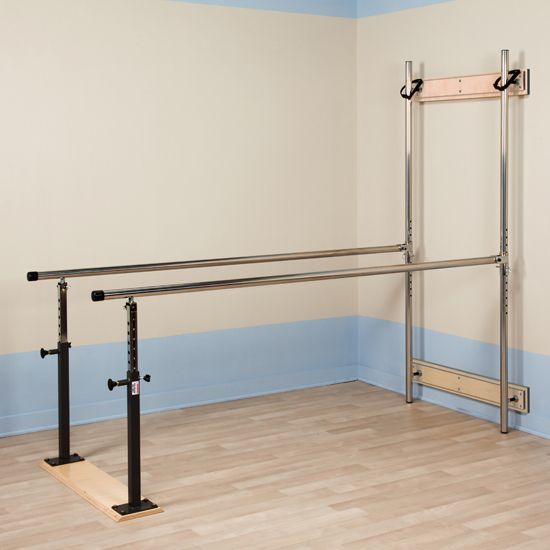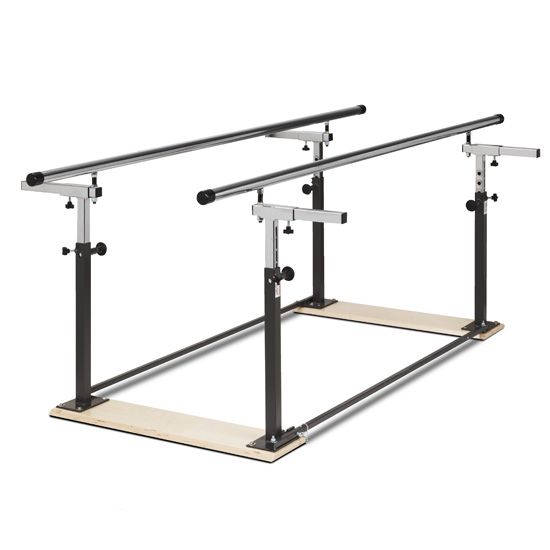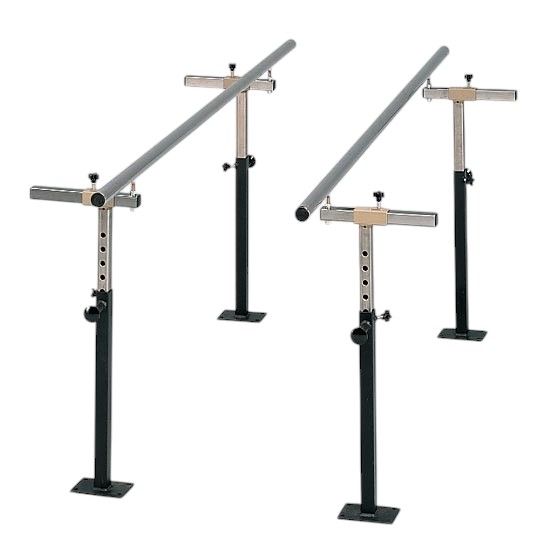Home » Rehabilitation Equipment & Products » Use Of Physical Therapy Tables In Rehabilitative Therapy Programs » Use Of Physical Therapy Tables In Rehabilitative Therapy Programs
Use Of Physical Therapy Tables In Rehabilitative Therapy Programs

Wall Mounted Folding Parallel Bars
Retail Price: $1,330.31
Your Price: $985.41

Height and Width Adjustable Folding Parallel Bars
Retail Price: $972.89
Your Price: $720.66

Floor Mounted Parallel Bars
Retail Price: $1,111.86
Your Price: $823.60
Physical therapy tables are necessary fixtures for every therapy program. Physical therapy tables are utilized to augment more than just physical therapy programs, but pediatric therapy programs, geriatric therapy programs, neurological therapy programs and others. The physical therapy tables in our inventory are designed to accommodate the needs of almost every patient, whether they’re in a wheelchair or require the use of walkers or other mobility aids. Each physical therapy table is easy to move, simple to adjust, and the crank handles on the physical therapy tables are retractable so they won’t present an obstacle or hazard to either patient or healthcare provider. The physical therapy tables we carry are simply vital for any rehabilitation program and physical therapy procedure.
The purpose of physical therapy is to help patients regain the use of their muscles, bones, and nervous system through the use of exercise equipment, heat therapy, cold therapy, massagers, whirlpool baths, among a myriad of other techniques. Every physical therapy treatment plan attempts to relieve pain, improve strength and mobility, and train patients to perform necessary tasks in order to resume their everyday lifestyles. Physical therapy is often prescribed to rehabilitate a patient after many injuries, illnesses, and disease such as:
- Amputations
- Arthritis
- Burns
- Cancer
- Cardiac Disease
- Cervical and Lumbar Dysfunction
- Neurological Problems
- Orthopedic Injuries
- Pulmonary Disease
- Spinal Cord Injuries
- Stroke
- Traumatic Brain Injuries
The duration of any physical therapy program varies depending on the severity of the injury or illness being treated as well as the patient's response to therapy.
Physical therapy tables are commonly used in exercise regimens, the best known and most widely used form of physical therapy. Depending on the patient's condition, exercises may be performed alone or with the assistance of a therapist. An exercise regimen will incorporate rehabilitation & exercise equipment including physical therapy tables, floor mats, stationary bicycles, walkers, wheelchairs, practice stairs, parallel bars, and pulley weights among others.
Physical therapy programs also incorporate hot & cold therapies. Heat therapy can be applied with compresses, paraffin wax therapy, or by soaking in a whirlpool. This strategy aims to stimulate a patient’s circulation, relax muscles, and relieve pain. Cold therapy can be applied with ice or soaking. As well, massagers can help improve circulation, relieve pain and muscle spasms, reduce swelling, and help the patient to simply relax. Electrotherapy may also be used to stimulate muscle and make them contract, helping weakened or paralyzed muscles respond again.
Geriatric physical therapy encompasses a broad area of issues that concern people as they age, but is typically focused on the elderly. There are conditions that affect many people as they grow older including arthritis, osteoporosis, cancer, Alzheimer’s disease, hip and joint replacement, balance disorders, and more. The use of physical therapy treatment tables in geriatric physical therapy will help restore dexterity, movement, cognizance, object recognition, and more.
Neurological physical therapy focuses on individuals with a neurological disorder or disease, including cerebral palsy, Alzheimer’s, multiple sclerosis, Parkinson’s, stroke, spinal cord injuries, and others. Common problems associated with neurological disorders include vision impairment, poor balance, paralysis, and loss of functional independence. Therapists use physical therapy treatment tables to work with patients to improve these areas of dysfunction.
Pediatric physical therapy uses a wide variety of modalities to treat disorders in children. Physical therapy tables will be utilized as work stations to improve motor skills, coordination, as well as cognitive and sensory processing. Children with developmental delays, cerebral palsy, spina bifida, and torticollis are a few of the patients treated by pediatric physical therapists.
MSEC remains dedicated to providing the very best and the very latest in medical supplies and equipment. We never cease to be on the lookout for the latest innovation that will benefit both our many clients and the patients they dedicate their lives to caring for. If you have any difficulty finding your choices in our vast inventory, call our customer service at 1-877-706-4480 to speed up your order or to make a special request. We are always happy to help you.














